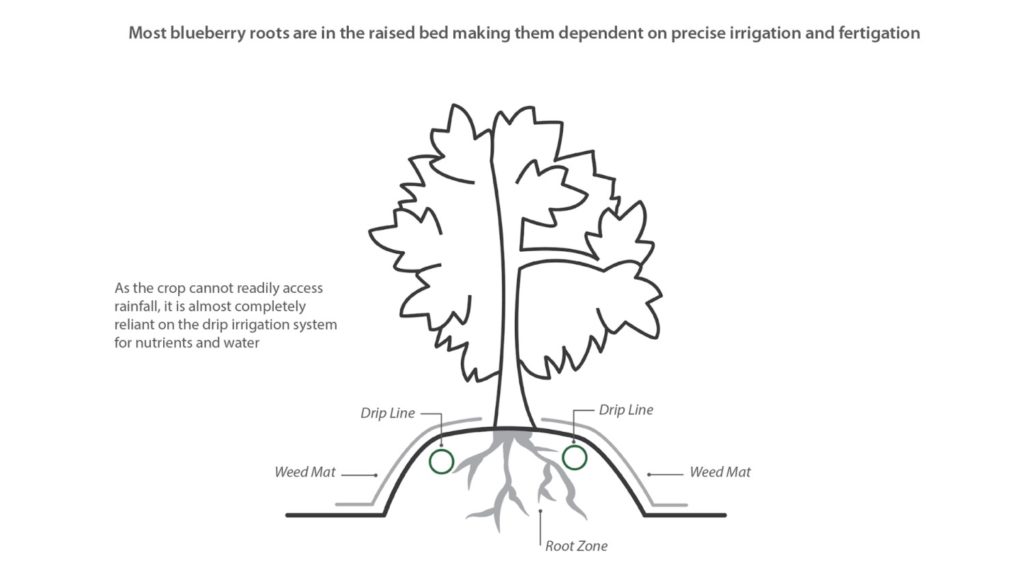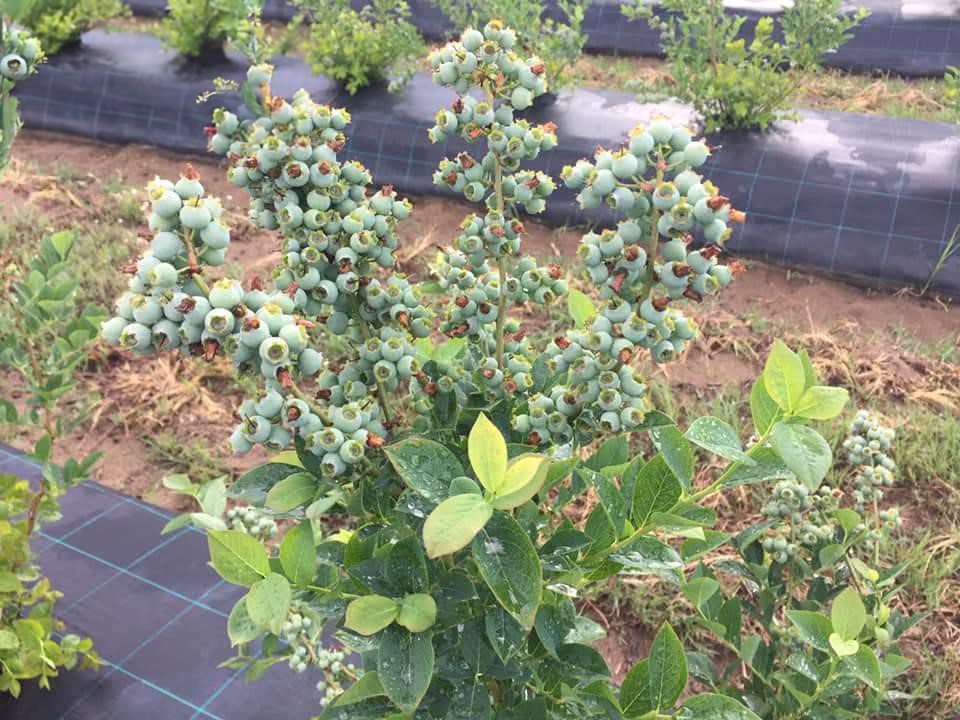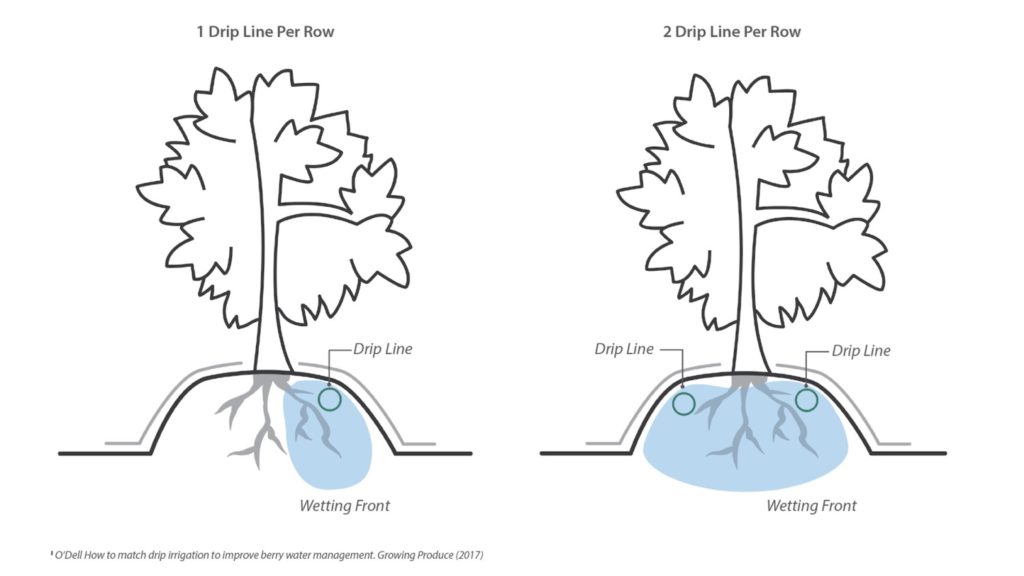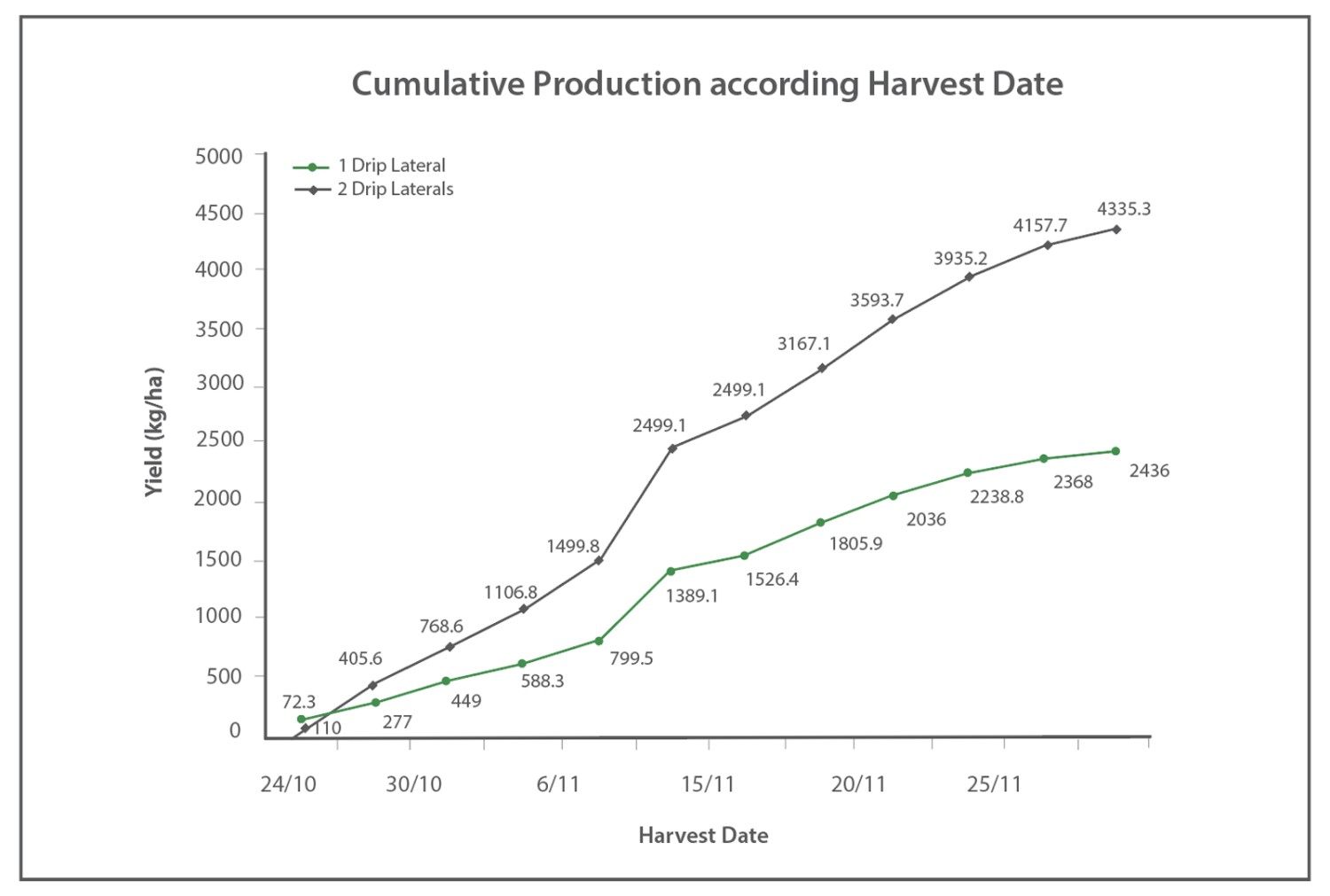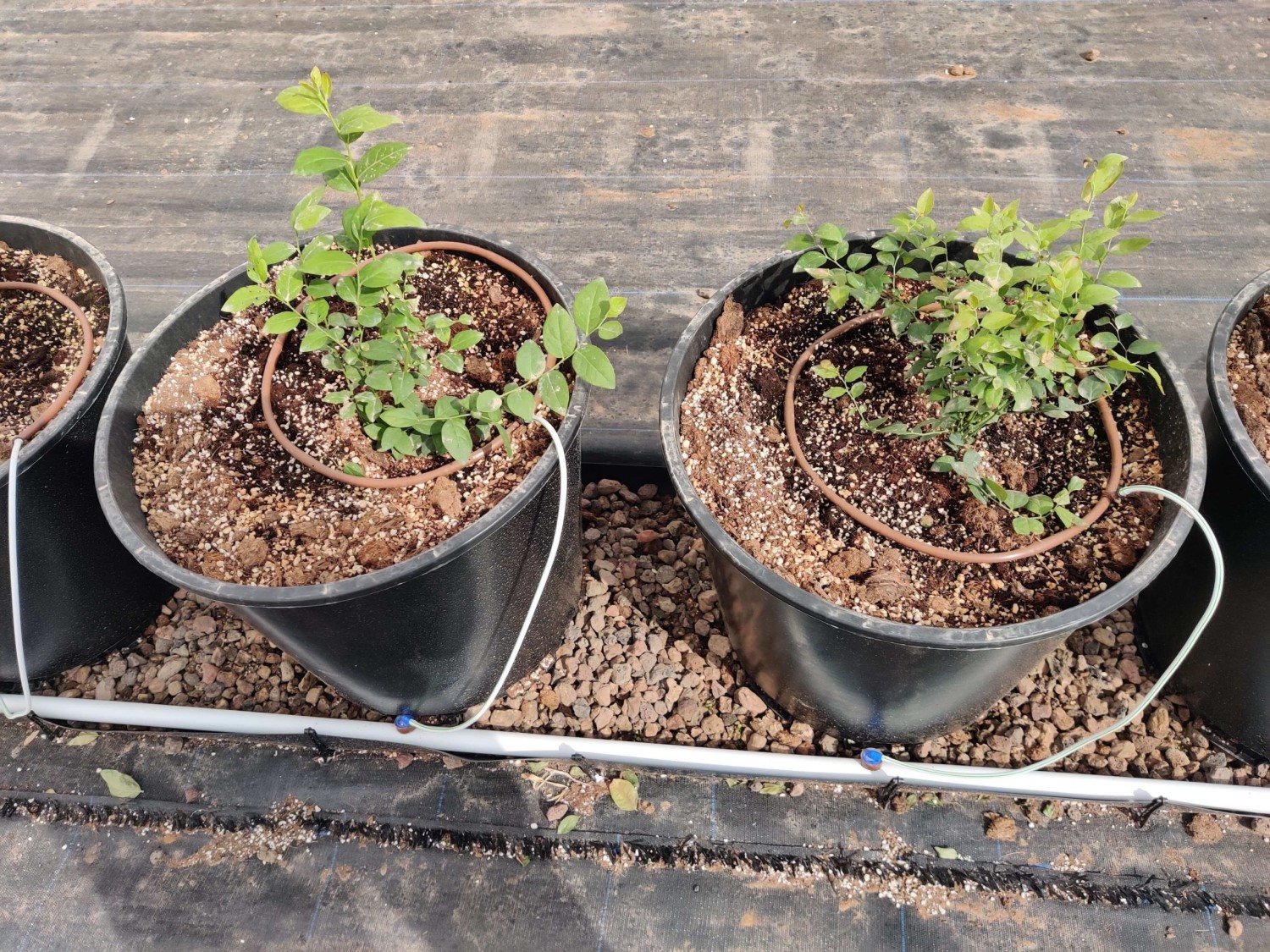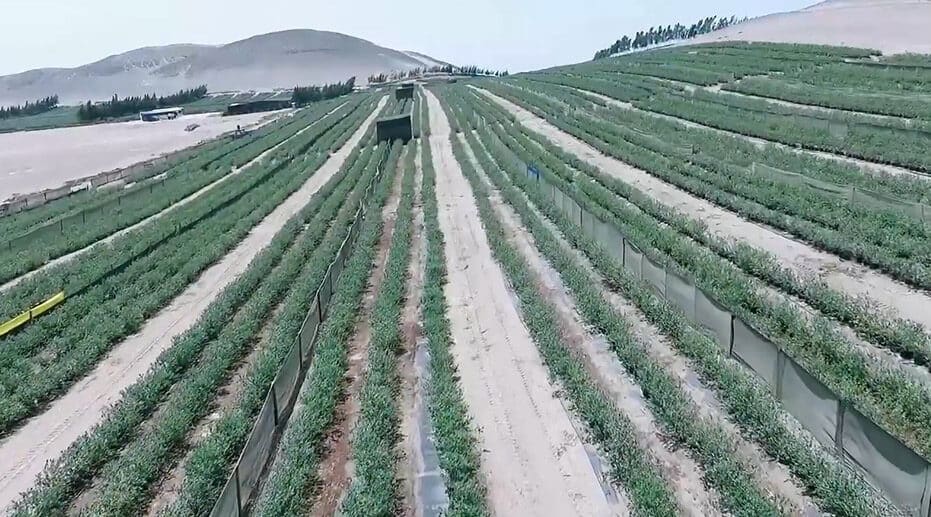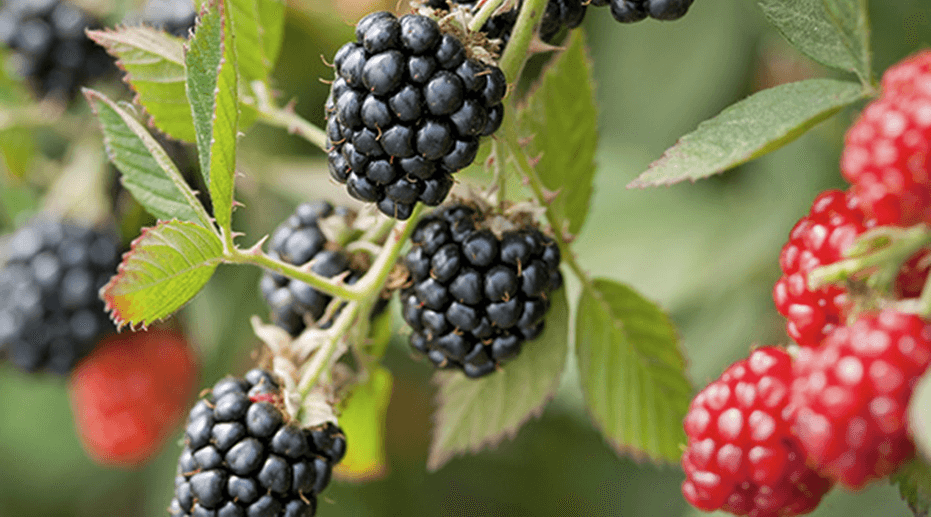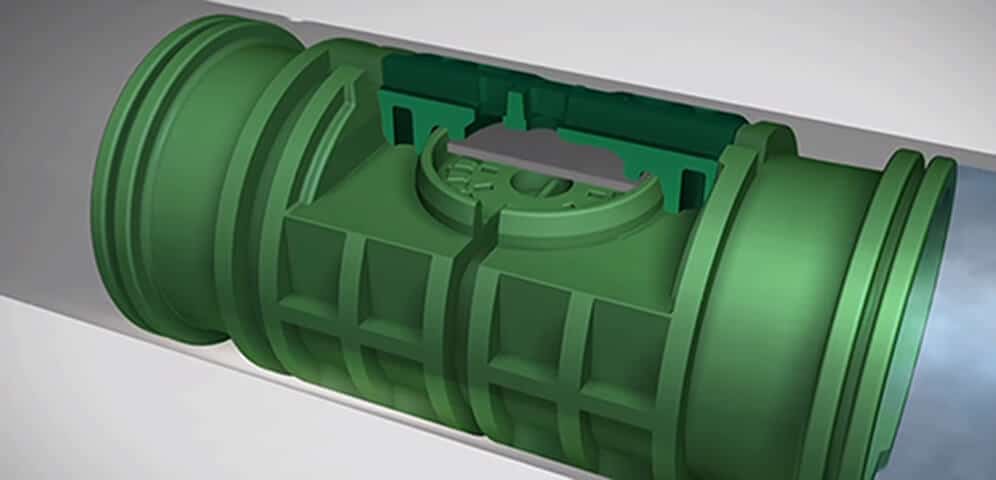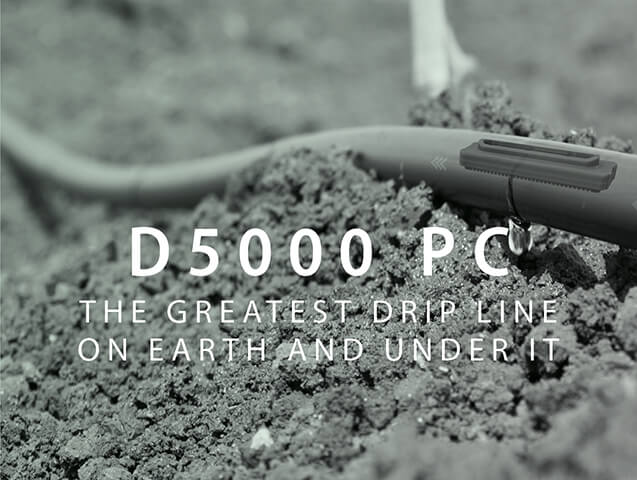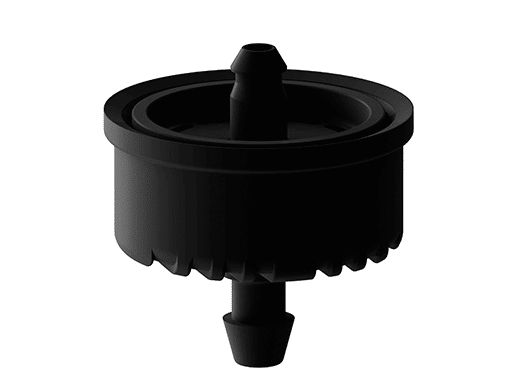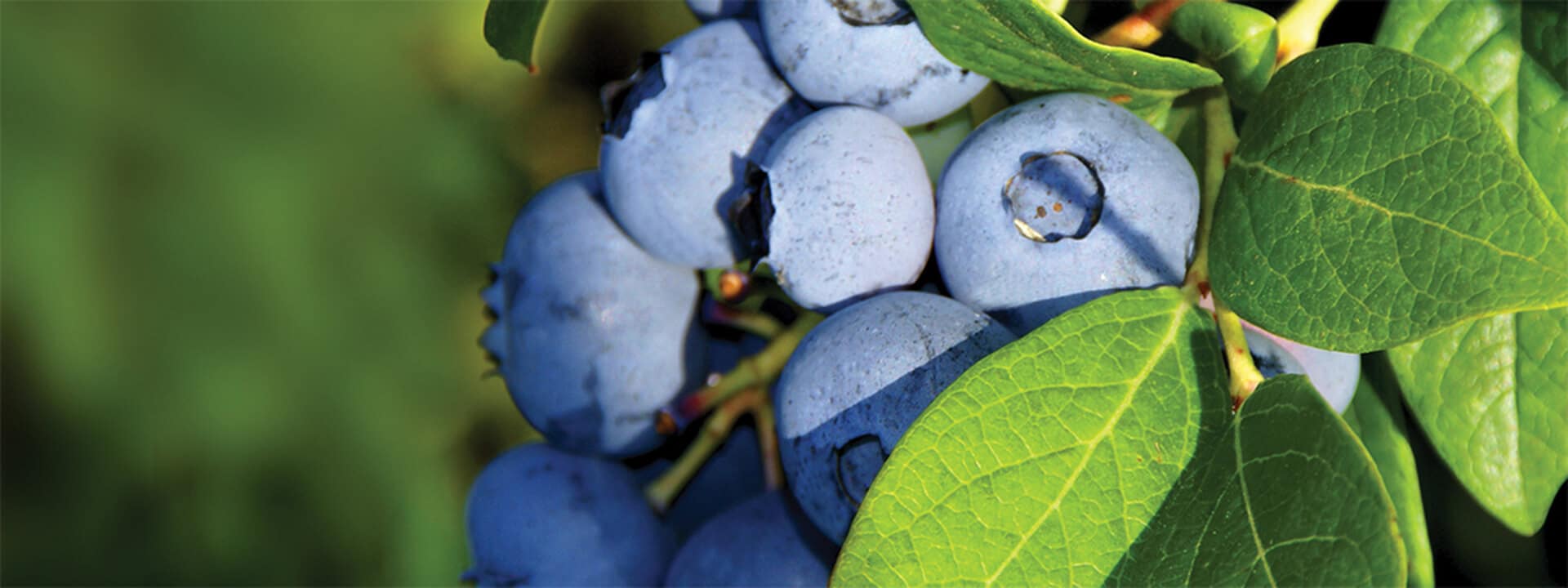
Blueberries irrigation guide: Enhancing yield with drip and micro irrigation
Blueberries are a high-value cash crop with very good revenue potential. However, they also come with steep production costs, and as a perennial shrub, are quite sensitive and demanding. They are a challenge to grow, with unique water and soil requirements, and susceptibility to disease. Investing in a drip irrigation system to provide the right amount of water and fertilizer at the right time is one of the best ways to significantly increase your blueberry crop yields and quality.
How to grow blueberries: Growing in soil
This is the most common method for growing blueberries. They can be grown in open field or in tunnels for weather/climate protection. Due to a combination of raised beds, weed mats/mulching and a short root zone, blueberries are almost completely dependent on the irrigation system for water and nutrients.
Important drip irrigation principle for blueberries: Irrigate as if you are using a soilless/hydroponic system even if the blueberries are in soil.
Blueberries require 200–300 mm/ha (3.19–4.78”/acre) of irrigation per year, but the crop cannot readily access rainfall, and as most roots are in the raised bed, blueberries depend on precise irrigation and fertigation.
Important considerations for growing in soil
Raised beds
Blueberries have a shallow root system and are susceptible to water stress. Planting blueberries in raised beds is important for drainage and allows the roots to develop above the wet zone to prevent water logging. Beds should be raised 15–20 cm (6–8”).
Substrate
As many soils do not have the optimal conditions for growing blueberries, it is often recommended to dig a trench and create a raised bed with the application of a substrate that is light in texture, for good air to water ratio, and has a pH of 4.0–5.0.
Mulching/weed mat
10–15 cm (6–8”) of mulch should be applied, with repeat applications once the mulch decomposes to 5–7 cm (2–3”). Mulching regimes are important because the roots of blueberries will grow on the edge of the soil. If there is a high rate of mulch decomposition, the roots will become exposed without protection. Mulching may also be used in conjunction with a weed mat.
Irrigation timing
Irrigation periods should be short (less than 15 minutes). With a small root structure and most of the root zone being in the raised bed, extended irrigation risks water logging and will cause water and nutrients to pass out of the beds and into the soil below, where it cannot be accessed by the roots.
Minimize drainage from the drip line
To prevent water from draining at shutdown, anti-siphon (AS) or no-drain (ND) drip lines should be used. Additionally, mainlines and submains should be designed so that their holding content is minimal and their drainage through the drip lines at shutdown is minimal to prevent water logging.
How to decide: One or two rows of drip line
The question of one or two rows of drip line is common, and an important topic that needs to be expanded. Blueberries are shallow rooted but will extend to the width of the raised beds (up to 1 meter (3’) width). Providing water to more of the total root diameter will lead to increased nutrient uptake, reduced plant stress, better growth of young stems and larger berry size.
Results and conclusions
- Using one drip lateral, only one half of the ridge gets wet and only limited roots received irrigation. The reduction of wet area leads to a water deficit in the plant.
- Using two drip laterals wets almost all the ridge, resulting in much healthier growth.
Two drip lines also act as an insurance policy. Because blueberries are so dependent on irrigation for water and nutrients, they are more sensitive to dripper failures. If only one drip line is used and the drip line is under mulch or a weed mat, it is difficult to detect blockages. By the time you know, it will be too late. If using one drip line, placement is critical. The ideal location for a single drip line is a minimum of 10 cm (4”) away from the base of the plant, as that is where blueberry feeder roots are located. You should avoid placing the drip line near the center of the crown as it increases the risk of root diseases such as phytophthora.
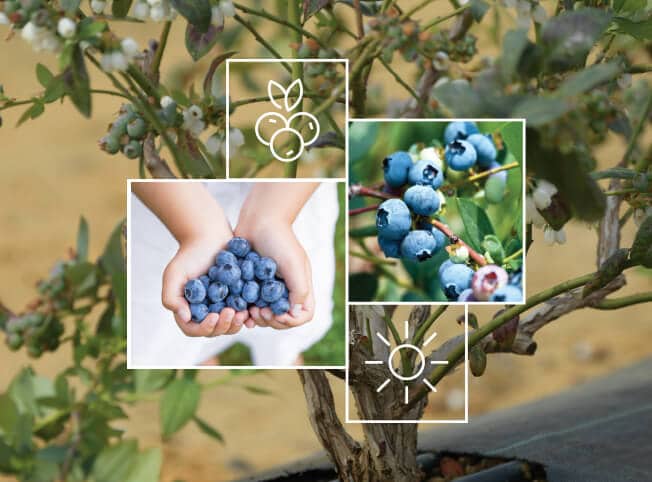
How to grow blueberries: Growing in bags
Growing in grow bags is a method of blueberry production in greenhouses and tunnels. Although the growing method is difficult, it is often chosen to provide optimal growing conditions, including low pH and adequate drainage. If growing in bags, there are a number of important considerations to take into account as you set up your system.
Greater sensitivity
Growing in bags means a smaller margin of error than growing in soil. The grow bags have fewer nutrients, and therefore you need to carefully prescribe the exact nutrient application that needs to be delivered through the drip irrigation system.
Bag sizes
Growing in bags may require progressively larger bags over time.
Monitor drain water
Blueberries require a pH of 4.0 – 5.0 and EC lower than 1, monitoring is needed to ensure adequate conditions for plant growth.
Additional sulfur requirements
Blueberry plants use higher amounts of sulfur compared to many other plants. Blueberries require more than the standard formula of sulfur to be added.
Irrigation methods
There are two common drip irrigation methods used for irrigation in grow bags:
- drip line over bags
- online drippers with tube and pegs.
The advantages of drip irrigation for blueberry cultivation
Blueberries easily suffer from water-logging. Unlike crops that require prolonged irrigation periods, the roots of blueberries should be kept damp, not wet. Irrigation with drip will ensure the right amount of water is supplied at all times. Irrigation for 15-minute intervals, 6–8 times per day is common.
Rivulis drip irrigation systems for blueberries
Since blueberries need to be irrigated in intervals (e.g. 15-minute intervals, 6–8 times per day), the irrigation system must be suitable for this application. This method is called pulse irrigation.

What blueberry growers are saying about Rivulis
Irrigation solutions for blueberries
Frequently Asked Questions about Blueberries
Optimal conditions can vary from cultivar to cultivar, but in general, for blueberry growth there should be a chilling period of 1,000 hours below 7 °C and above 0 °C in winter for proper bud development. Summers should have warm days and cool nights, with temperatures ranging between 15 and 24 °C, facilitating flowering and fruiting. When growing blueberries in warm areas where temperatures can reach over 32–35 °C, floggers are necessary to cool plant surroundings and prevent heat damage.
Yes, blueberries are very sensitive to salinity stress, and long exposure to this condition will affect plant growth and decrease yields. Salinity is generally measured by the electrical conductivity (EC) of the irrigation water. For blueberries, the EC should be less than 1.5.
Drip irrigation is the most suitable for blueberries as they easily suffer from water-logging. Unlike crops that require prolonged irrigation periods, the roots of blueberries should be kept damp, not wet. The low flow rate of drip irrigation is ideal for this purpose.

Any information provided herein, including any case study referrals are for information purposes only and actual results may vary.
Whilst every effort has been made to ensure all data is accurate, the accuracy of all data cannot be guaranteed and it is advised that you to consult with an irrigation specialist for your specific needs and to carefully review technical specifications for proper use.
As some products are not available in all regions, please contact your local authorized dealer for additional details.
TABLE OF CONTENTS
- How to grow blueberries: Growing in soil
- How to grow blueberries: Growing in bags
- The advantages of drip irrigation for blueberry cultivation
- Rivulis drip irrigation systems for blueberries
- What blueberry growers are saying about Rivulis
- Irrigation solutions for blueberries
- Frequently asked questions about blueberries


